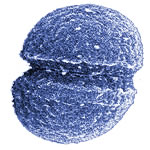Enterococcus faecium
- Organism Specific Information
- Concatenate Sequences
Download Alleles - Download ST’s
- Compare profile to refset
- Compare profile to PMEN Clones
- Draw tree using own MLST data
- download as MS Excel
- download as MS Access
- E.faecium Links
- eBURST V3
- Contact Curator
Enterococcus faecium is a type of enterococcus that is part of the normal microflora of the human digestive tract, as well as some mammals.
Enterococci are lactic acid gram-positive bacteria that do not form spores and capsules, optional anaerobes (able to use the fermentation energy and therefore, live with large and negligible amounts of oxygen). The optimal temperature for the cultivation of enterococci is from 95 to 99°F. Enterococci metabolize the fermentation type, ferment various carbohydrates with the formation of mainly lactic acid, but not gas, reducing the acidity of the medium to 4.2–4.6 pH. Enterococci are highly resistant to various environmental factors and disinfectants, can remain viable on household items for a long time, withstand heating to 140°F for 30 minutes.
Enterococci of E. faecium colonize mainly the small intestine. They have high enzymatic activity, expressed antagonism in relation to opportunistic microbes (they produce enterocins), they survive in bile.
Enterococcus faecium is also a conditionally pathogenic microbe. On the one hand, it is a microorganism necessary for humans (animal experiments proved that the absence of Enterococcus faecium in the intestine can lead to the death of an animal from infection), but, on the other, it can be the cause of various diseases.
Enterococcus faecium is increasingly causing nosocomial infections. Over the past decades, an increase in enterococcal resistance to vancomycin has been noted. The frequency of vancomycin resistance in Enterococcus faecium strains reaches 50%, which is much higher than in the strains of Enterococcus faecalis most common in humans (5%).
Enterococcus faecium can cause spontaneous bacterial peritonitis.
The composition of probiotic drugs includes a specially selected strain of Enterococcus faecium SF68, which is distinguished by a high level of antibiotic resistance and non-pathogenicity. The virulence genes known for pathogenic clinical isolates of enterococci are absent in the genome of this strain: gelE (gelatinize), sprE (serine protease), esp (extracellular surface protein), fsrB (virulence factor regulator), asa1 (aggregation substance). Enterococcus faecium SF68 is sensitive to vancomycin, ampicillin, piperacillin, chloramphenicol, erythromycin, imipenem, ciprofloxacin and fusidic acid and is resistant to methicillin, cefuroxime, aztreonam, B. imipramine, tobramycin.
Enterococcus faecium, a germ-free aqueous substrate of metabolic products, is part of the Hilak forte antidiarrheal drug.
Enterococcus faecium populates the human intestines in the early days of life. Enterococcal colonization is more active in breast-fed infants.
Enterococcus faecium, like other enterococci, is used in the food industry, which uses the ability of enterococci to hydrolyze lactose, ferment milk, effectively suppress pathogenic bacteria in the food itself, as well as their high resistance to acids, salts and high temperature. Various strains of Enterococcus faecium are widely used in the manufacture of various varieties of cheese and smoked meats. Below are some examples:
- strain Enterococcus faecium FAIR-E 198 is used in the preparation of feta cheese;
- RZS C5 and DPC 1146 strains – Cheddar cheese;
- strains CCM 4231 and RZS C13 – Spanish cold-smoked sausage;
- strain CTC49 2 – smoked sausage and smoked pork.
Enterococcus faecium: active antibiotics
Antibacterial agents that are active against Enterococcus faecium include vancomycin, nifuratel, doxycycline (not all strains).
Antibacterial linezolid is used to treat enterococcal infections, including those caused by vancomycin-resistant strains of Enterococcus faecium.
Enterococcus faecium is not active against Lincomycin.
Enterococcus faecium in the taxonomy of bacteria
According to modern ideas, the species Enterococcus faecium belongs to the genus Enterococcus, which is part of the Enterococcaceae family, the order Lactobacillales, class Bacilli, type Firmicutes, Terrabacteria group, the kingdom of Bacteria.
According to the previously adopted classification, enterococci belonged to group D streptococci and Enterococcus faecium were called Streptococcus faecium.


